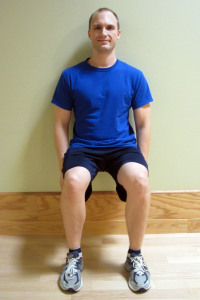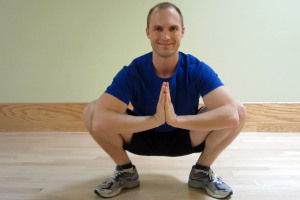Q. Over the last month or so, I have had a pain in the back of my knee. My knee feels really stiff when I sit cross-legged or try to squat. What should I do? –Sam
A. Great question, Sam! The symptoms you are describing sound like the pain may be coming from your meniscus. The meniscus is the cushion found between the two major leg bones, the femur and the tibia. It is made of a cartilaginous substance. Many times, the meniscal cartilage can be torn. It would be similar to getting a hang nail near your cuticle. A tear occurs when the cartilage rises up and causes pain, a feeling of knee instability, and/or locking up of the knee. Other times, the cartilage can become frayed like an old rope. This fraying can cause pain and stiffness, particularly pain behind the knee in an area known as the popliteal space.
The good news is that most meniscal related injuries don’t require surgery. Research suggests that the proper physical therapy program can be superior to surgical intervention with long term outcomes. There are times when surgery will be indicated, but physical therapy is typically indicated as an initial course of action. (Particularly, when there are no episodes of knee locking occurring.)
The following 7 tips will help you to rehabilitate your knee. If symptoms worsen, then additional assessment and follow up is likely needed. I would anticipate an improvement of your symptoms in a few of weeks or less when initiating this program. (Depending on the severity, it could take longer for a full recovery.) If the pain continues, please seek additional assistance from a qualified physical therapist or physician.
1. Warm up prior to exercise. I recommend that you increase your normal warm up time by at least 10 minutes in order to increase blood flow to the area. This allows for better mobility and also promotes healing as movement is necessary to bring in the nutrients. Use a stationary bike or the rower machine initially to get the muscles warm and the knee joint more lubricated. Then work on moving into a deep squat position multiple times as part of the warm up. You may need to hang onto a beam or a pole to take some pressure off of your knee as you move in and out of the squat.
2. If it hurts, don’t do it! Modify the activity or discontinue it completely. If your knee is hurting when performing a squat, then initially don’t move as deep into the exercise. This would also be true for a lunge position or step up. Modify any exercise as you need to, and don’t compromise technique to complete an exercise. Poor technique will only increase your risk of injury elsewhere.
3. Work on strengthening. The primary goal of a strengthening program is to work on quadriceps and glut medius (hip abduction) strengthening. Weight lifting is an appropriate choice, but you may have to initially limit your range of motion (ROM). Most of my clients begin on a non-weight bearing program, then progress to partial weight bearing, and eventually, full weight bearing. The more severe the symptoms, the longer it will take for an individual to progress to more difficult exercises.
To initiate a physical therapy program, please refer to Meniscus Rehab Exercises. This exercise guide is designed to address the muscles that I find are weakest in most individuals. The exercises are listed from easiest to most challenging and are designed to primarily improve quadriceps and hip strengthening. Start with exercises like a straight leg raise (possibly with an ankle weight) and bridging (either one or both legs). Wall squats holding for time also works well. A Thera-Band Exercise Band can be tied around the thighs above your knees to make your hips more engaged.
Weight training exercises (with machine weights or free weights) should be geared toward general leg strengthening and may include: squats; leg press; hip abduction machine; step ups; dead lifts; and straight leg dead lifts. If further instruction is needed, search YouTube to watch the proper technique for a specific exercise.
The speed at which exercise is performed while in group exercise classes is typically too fast for an individual who is properly and safely exercising his/her knee during a rehab and recovery phase. You can still participate in group exercise classes or CrossFit WODs (Work out of the Day), but your specific knee program should be separate from any group structured activity. You need time to insure proper technique.
4. Cool down. After performing your exercises, take extra time to cool down and stretch. Use either a stationary bike (at a causal/slower pace) or the rower machine. Both are reduced weight bearing exercises that promote movement and circulation to the knee as well as increasing range of motion (ROM).
5. Improve your Range of Motion (ROM). The goal of the rehabilitation program is to regain full pain free ROM. This can be accomplished many ways. Perform heel slides by lying on your back and sliding your heel toward your buttocks. Consider using a pole to assist in performing deeps squats. Hang onto a pole or a door frame, and bring your heel toward your buttocks as you perform a quadriceps stretch. These exercises can be performed within a mild to moderate amount of discomfort in order to regain full pain free ROM. If you experience muscle tightness and soreness, I recommend using a foam roller to assist with any myofascial symptoms. To learn how to use a foam roller, please refer to Foam Rolling for Rehabilitation.
6. Drink more water. Cartilage tends to have a poor blood supply. The more water you drink, the more hydrated your body becomes. This can help the body to deliver much needed hydration and nutrients to the meniscus.
7. Add a joint supplement. CapraFlex is my preferred supplement for meniscal related injuries. I have recommended this supplement for years as my clients have had successful outcomes with use. I have taken it to help prevent injury as I entered a particularly intense period of training as I prepared for a marathon. It has also assisted in recovery from my many injuries. Essentially, it combines an organic glucosamine and chondroitin supplement with other natural herbs which are designed to reduce inflammation. CapraFlex can be taken long term or intermittently to help heal from an injury. I recommend that you try it for 30 days to see if it improves your knee pain. (If you are taking blood thinners, please consult with your physician prior to use as the herbs could interact with some medications.)
Thank you, Sam, for your question. I hope these 7 tips will help you to rehabilitate your knee and recover quickly! If the pain continues, please seek additional assistance from a qualified physical therapist or physician.
Which treatments for knee pain are the most effective for you? Please share any recommendations that you may have by leaving your comments below.
If you have a question that you would like featured in an upcoming blog post, please comment below or submit your question to contact@thePhysicalTherapyAdvisor.com. Be sure to join our growing community on Facebook by liking The Physical Therapy Advisor!
Disclaimer: The Physical Therapy Advisor blog is for general informational purposes only and does not constitute the practice of medicine or other professional health care services, including the giving of medical advice. No health care provider/patient relationship is formed. The use of information on this blog or materials linked from this blog is at your own risk. The content of this blog is not intended to be a substitute for professional medical advice, diagnosis, or treatment. Do not disregard, or delay in obtaining, medical advice for any medical condition you may have. Please seek the assistance of your health care professionals for any such conditions.


